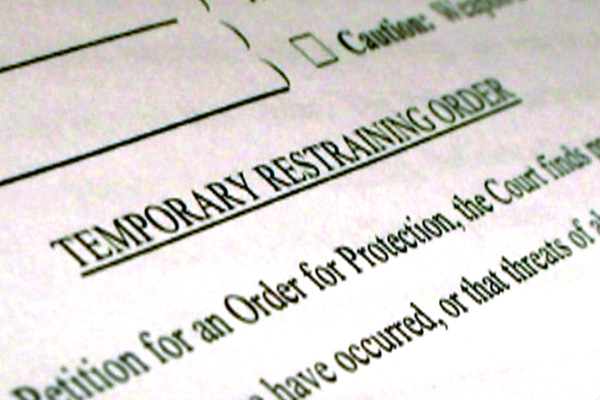
How To Get A Divorce ?:- The most important step in any divorce, is making the decision to get divorce. It means that you are ready to end your marriage. The decision may be sometimes unclear, while other times it may not. Engaging the legal process can lead to a countless charged emotions, broken trust, and other problems, although the legal process can be stopped.

Thus, until you are absolutely sure that you want to end your marriage, it is very important that you do not start the divorce process. It is important to have a clear understanding of the process, if you have decided to start the legal divorce process - also referred to as a dissolution of marriage. To help through the process, it is highly recommended that individuals seek the guidance of a licensed family attorney.

(Image Source: Hermine-okayama.com)
There are times, though, when the Plaintiff (the person starting the divorce action), Respondent or both the parties will elect to represent themselves in the divorce process. When this happens, it is referred to as “pro se” or “in pro persona”.
The family laws and procedures are highly complex. Divorce is also usually a highly charged and emotional process. One that can intervene with an individual’s ability to think clearly and maintain their composure.
Do not respond to an interrogatory or request for disclosure, if you miss a deadline to file an important document. The court will most likely not provide you with a second chance and in situations where it disrupts process or creates avoidable issues, may find the individual in contempt.
The parties in the divorce will also have the opportunity to settle their issues, which when possible, is the preferred direction to pursue.
To settle their difference, courts encourage parties as they are personal matters and every marriage is different. If settlement is not reached, the parties are subjected to a judge, who does not know the parties, to apply the laws in the manner they feel is best and consistent with laws and procedures. When this happens, the chances of both parties feeling angry, aggravated, and defeated increase substantially. Settling the issues is also recommended as it can save time and money, which will likely be much and expensive if settlement cannot be reached.
The following reflects steps commonly associated with the divorce process:
- Petition For Divorce
- Response to Petition
- Serving Documents
- Filing Documents
- Temporary Orders
- Discovery
A) Petition For Divorce

(Image Source: Live About)
Documents must be prepared to reflect the Plaintiff/Complainant’s intent to the court to pursue a divorce as well as to notify the other party (Defendant/Respondent; the one being divorced) that an action seeking divorce has been filed against them, once the decision has been made to file for divorce.
Two common types of forms that are used in this process- the Petition and the Summons. The initial form outlining a party’s intent (divorce, legal separation, annulment, etc.) is the petition and is initiated by the Plaintiff/Complainant. Thus, the party initiating the process is referred to as the moving party.
Some common types of information that may be included in a petition for divorce include:
- Identifies the parties involved (the spouses, husband, wife, etc.)
- The current legal relationship (married, domestic partners, etc.)
- Residence information (address of their principle home)
- Dates of marriage, separation and domestic partnerships.
- Information about minor children (biological, adopted, etc.)
- The reason or grounds for seeking divorce (irreconcilable differences, fault, no-fault, legal incapacity, etc.)
- Petitioner’s desired legal and physical custody and/or visitation preferences (parenting time)
- If a party wants to seek spousal support/alimony.
- Information about separate, community and quasi-community property.
When seeking divorce in pro persona/pro se, it is important to refer to the laws of your state when it comes to the forms and processes for preparing, serving and filing the Petition. A Summon will most likely be required to accompany it, once the petition is completed. It is very important to pay close attention to the time line on the Petition. The Respondent may be subject to losing ground, temporary orders being made without consideration of their position, and be ordered to pay attorney fees and costs, if a Response is not served and filed within the legally required time.
The Petition for the dissolution of marriage may also include information about Restraining Orders against the Defendant/Complainant as well as processes to follow when the Defendant/Complainant is unable to pay any or all of the filing fees.
B) Response To Petition

(Image Source: Legal Info)
You will be on the receiving end of the Petition for Divorce, if you are the Defendant/Respondent in a divorce proceeding. This implies to respond to that Petition, you will be responsible for following specific requirements. Thus, it is time to pay close attention, read everything carefully, complete documents completely and accurately, and file and serve timely.
Look at the documents received to establish how long you have to file your response. This is the first thing you should do when you receive the Petition for Divorce. Be sure to look through all of the documents to see if you were also subsequently served with a motion like Motion for Temporary Orders, Restraining Order, etc.
Read everything to find out what is being asked for, as you review your documents. Using a highlighter to mark what your spouse wrote and what you want to respond to, is a good practice.
It is very important and recommended that you seek a family lawyer to read through the documents to obtain advice about how you should respond, even if you are intending to represent yourself.
The following elements will likely be important, depending upon what has been requested.
- Gathering your evidence and other forms that you will need.
- Reviewing the court’s procedures and rules.
- Determining if there are special local court forms.
- If necessary, making challenges to the court’s jurisdiction or other legal motions.
Follow the instructions and complete the Response and other documents completely and accurately, once all of these steps have been completed. When complete, review all of the documents to ensure that they are complete and accurate. You will need to make the appropriate number of copies of the documents for serving the other party, filing with the court, and retaining your copies, once confirmed.
From here, you will need to file your response with the court clerk’s office and then serve the documents on the other party.
C) Serving Documents

(Image Source: Processserversaz.com)
There are certain laws that require that parties involved in a legal action follow a clearly defined process to provide the other party with certain documents, when it comes to legal documents. This includes such specifics as how documents must be delivered, the timing of delivery, who is permitted to deliver those documents, and what documents and notices must be filed with the court clerk.
This process is referred to as Service of Process and the record of the delivery is referred to as Proof of Service. In general, Service of Process means that the other party must receive copies of documents filed in court by the other party. The court will be unable to make any judgments or permanent orders, if not serving the other party or following the appropriate steps. Once the party has received the documents as required by law, they have been properly served.
D) Filing Documents

(Image Source: Missouri Courts)
Individuals are required to file legal documents that tell the court what the dispute is and what is being asked for, when a decision is made to got to the court.
A crucial part of any case, is having the written documents that are filed. There would be no case in court, without them. When it comes to these forms and papers, it is important to understand two terms:
- Forms that are adopted must be used (mandatory)
- Forms that are approved may be used, but individuals can use a different form or just write up the information without using a form.
The benefit of court forms is that they often include instructions for completing them. It is highly recommended that the instructions are followed closely. There are common elements that you will find on the form, when you are reviewing a court form, many which can be very helpful and provide direction for legal research.
Some common elements found on forms include:
- Form numbers
- Whether it is adopted or approved
- State family law codes
Another type of document that you may experience or have to prepare is a pleading.
You will need to create your own legal document, when there is no court/judicial form available for your intended action.
Tips for completing court forms
1) Always be sure that you have the most current version of the form. The forms should contain a date, which is most often the date it was last updated. Ask the court clerk, if you are unsure whether it is the current form.
2) Be sure that the forms are clear and easy to read. It is a good idea to utilize this option, if the form is available and can be completed online. If the form must be completed by hand, use blue or black ink, or if possible, use a typewriter.
3) Forms tend to have specific information that will be necessary, thus it is important to have the information available. Such information includes:
- Names and addresses (and often the phone number of the individual completing the form)
- The names of the parties involved in the action (Plaintiff, Defendant)
- The court’s name and address
- The case number
4) Individuals representing themselves should write Self-Represented, In Pro Persona, or Pro Se on the Attorney For line.
5) Be sure to fill out the forms completely and accurately. If something does not apply, write N/A (which means that it does not apply).
6) Be sure to sign it where requested. Use blue or black ink only, when a signature is required. It is important to also note that some forms may include that “you acknowledge that you are signing it under penalty of perjury” which means that when you sign it…you are swearing that what is on the form is true and correct to the best of your knowledge.
7) When completing the form, take your time and complete it in the order it is presented. You can always come back to a question if you do not understand it.
8) If the court has self-help services, take advantage of them to ensure you are completing the correct forms the correct way. Legal actions are stressful enough without encountering unnecessary stress in court due to missed or incomplete documents.
9) Make copies of your documents and keep them in a safe place. The number of copies will vary, so be sure to identify how many copies you will need like one copy for you, two copies for the court, one copy for service, etc.
10) Organize all of your documents and forms in a folder and bring them with you when you go to the court, clerk’s office, the court’s self-help center, or if you go to see a lawyer.
Filing divorce documents and forms
Documentation is a critical part while filing for divorce. Having a clear understanding of the following can make the process run much smoother:
1) What and what documents must be filed.
2) The number of copies and format of the documents that must be filed.
3) How documents or divorce application can be filed.
E) Temporary Orders

(Image Source: Rose Rix Law Offices)
A court order signed by a judge is a temporary restraining order (TRO) or temporary protective order. It requires someone to stop harming or stalking you and is ideal for those involved in cases of domestic violence.
It is not necessary to have a domestic violence case pending in court, to obtain a TRO against someone who is abusing you. You may apply for legal protection, if you are subject to domestic violence, threats of domestic violence, or stalking.
F) Discovery

(Image Source: Goldman law)
Discovery is the legal process for gathering information necessary for the divorce process. This includes information usually about the person you are divorcing. Especially when it comes to assets, finances, debts, property, custody and support, this can be a very important part of the legal process.

The most important thing for a party is to always respond to discovery that is sent to you. Responses to discovery are generally due thirty days from the date served. It is always important to remember that a verification is always required when you are responding to discovery.
SUPRAJA

























